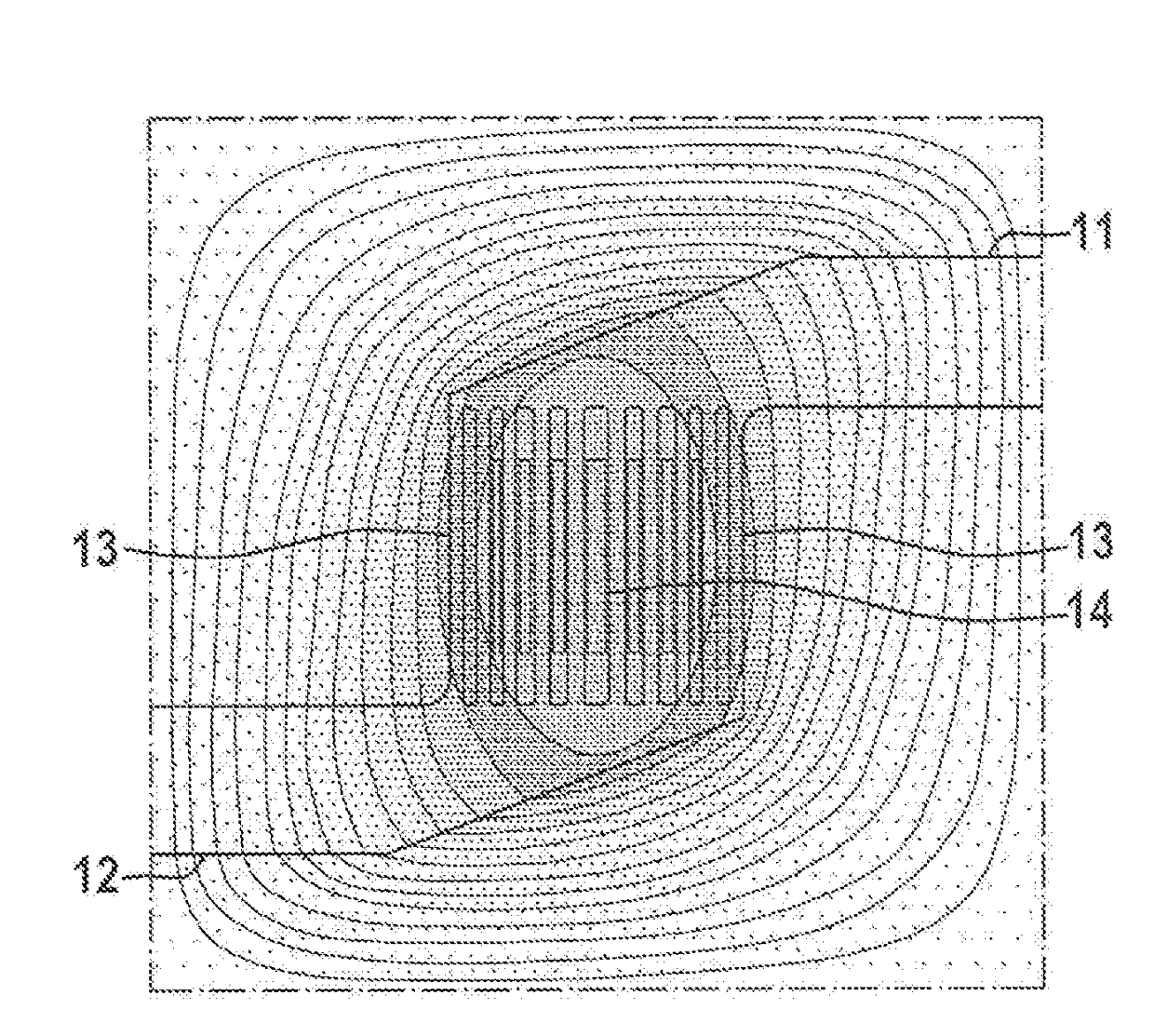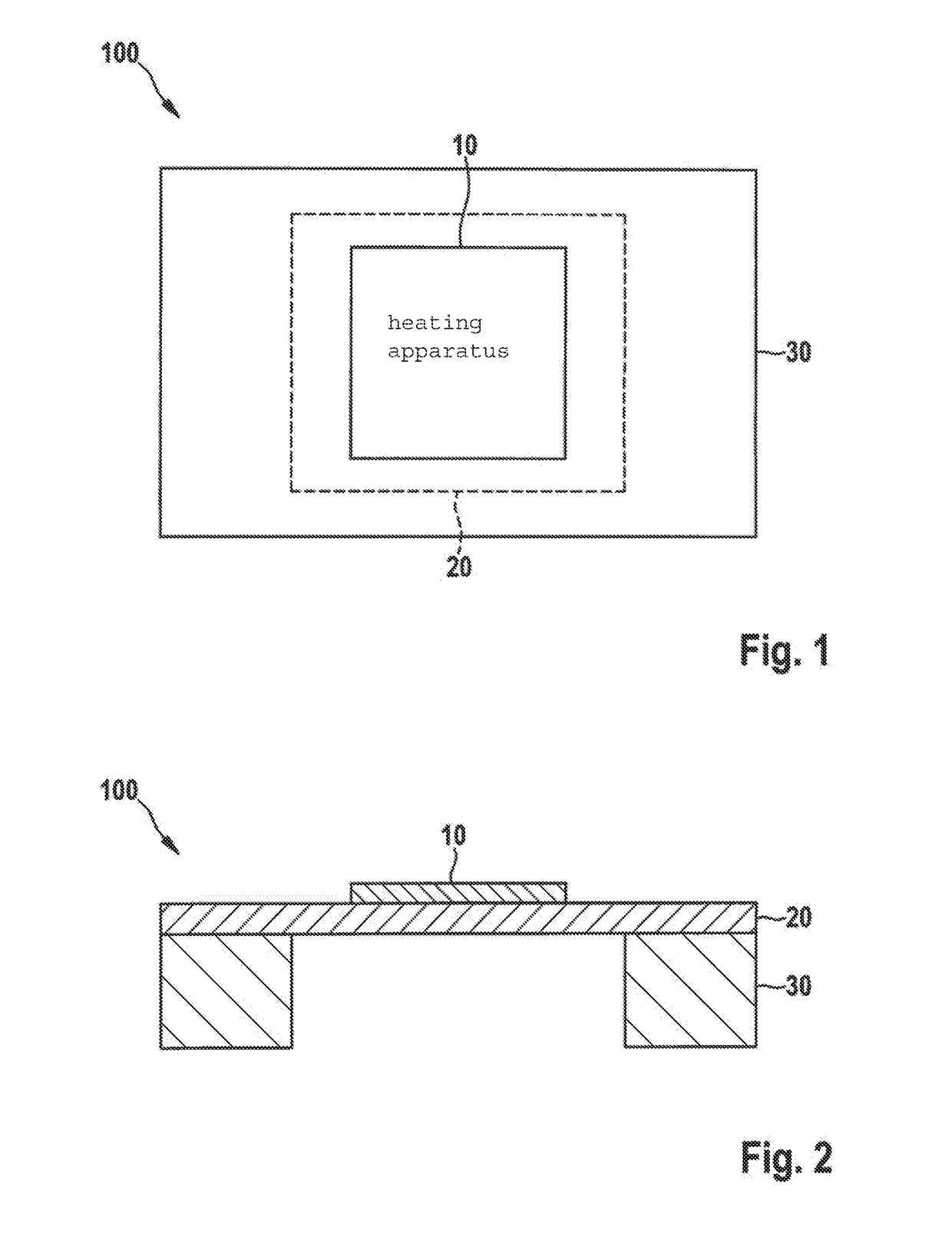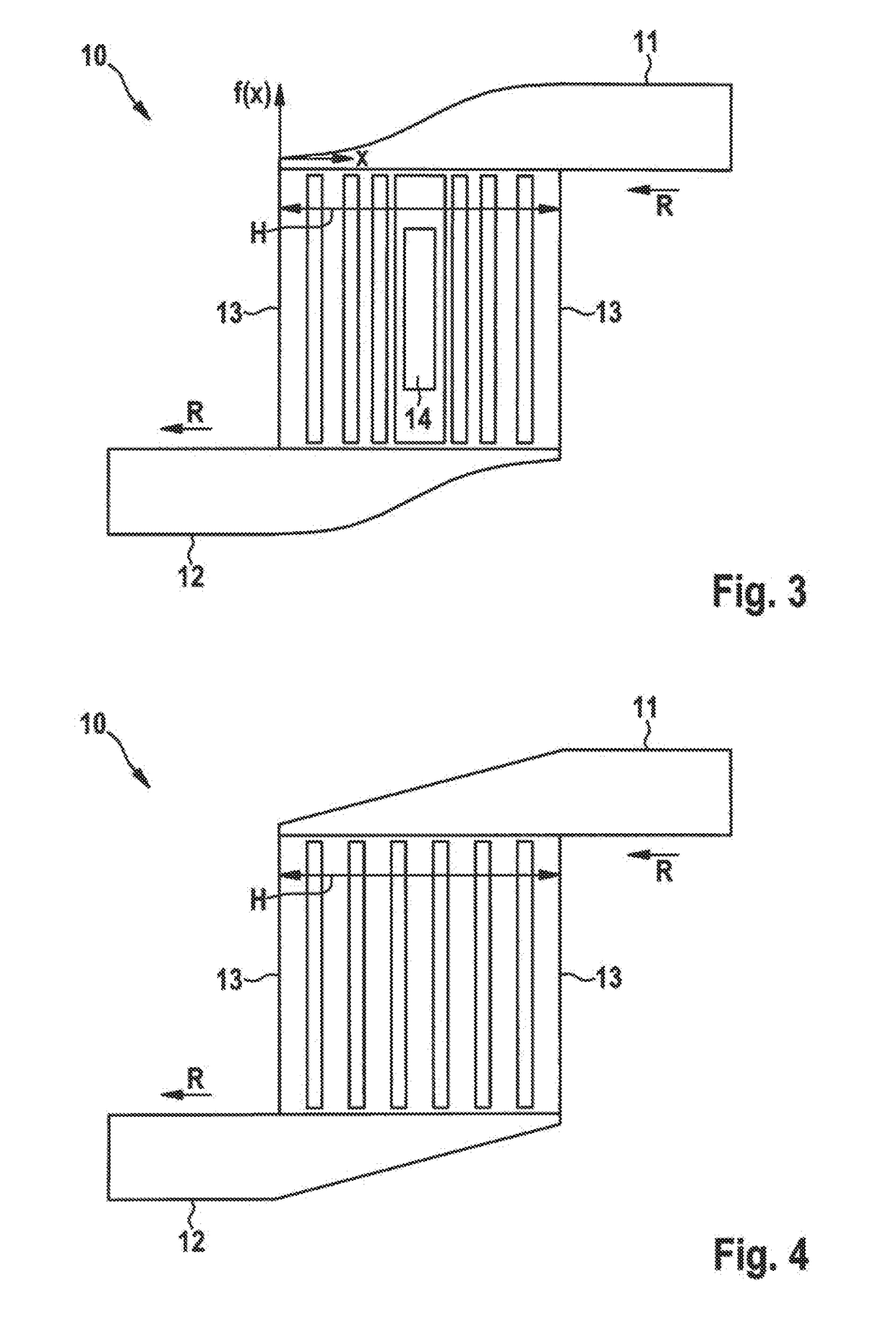Heating apparatus for a MEMS sensor
a technology of mems sensor and heating apparatus, which is applied in the direction of electrical apparatus, microelectromechanical systems, and electromechanical devices, etc., can solve the problems of high current density, high current density, and difficult to meet the needs of the user, so as to achieve uniform width, increase width, and uniform spacing
- Summary
- Abstract
- Description
- Claims
- Application Information
AI Technical Summary
Benefits of technology
Problems solved by technology
Method used
Image
Examples
Embodiment Construction
[0038]An aspect of the present invention involves furnishing a specific design for a heating element or heating apparatus for gas sensors or other applications having micro-heating devices, which design is largely resistant to electromigration and thereby promotes a longer service life and greater reliability of the gas sensors.
[0039]Provision is made in particular to implement a specific shape of a thin-layer metal heating element for a MEMS gas sensor. The heating element is implemented on a diaphragm, and is responsible for reaching the temperature necessary for the chemical reactions. The proposed heating element can, however, also advantageously be utilized in other, in particular chemical, sensor elements that require an elevated operating temperature and / or permit a similar structure.
[0040]A generalized MEMS sensor 100 is depicted in FIG. 1 in a schematic plan view. It encompasses a chip or support 30 on which a diaphragm 20 is applied. The chip material is removed from the b...
PUM
 Login to View More
Login to View More Abstract
Description
Claims
Application Information
 Login to View More
Login to View More - R&D
- Intellectual Property
- Life Sciences
- Materials
- Tech Scout
- Unparalleled Data Quality
- Higher Quality Content
- 60% Fewer Hallucinations
Browse by: Latest US Patents, China's latest patents, Technical Efficacy Thesaurus, Application Domain, Technology Topic, Popular Technical Reports.
© 2025 PatSnap. All rights reserved.Legal|Privacy policy|Modern Slavery Act Transparency Statement|Sitemap|About US| Contact US: help@patsnap.com



